Can Netflix bring about a change in way movies are consumed in India?
There is no dearth of movie lovers in India. We can watch movies at any time, and in multiple ways. We download it, borrow it, convince our friends to watch a movie time, catch up with our favourite movies while travelling, and even stay awake till late at night to catch our all time favourite ones.
The world's largest film and TV streaming service, Netflix, recently announced its plan to launch its operations in India along with 130 other countries. Netflix — known for its fast streaming services — has also gained immense popularity for its original content shows like House of Cards, Daredevil, and Orange is the New Black. Netflix's entry into India is the talk of the country and has received a mixed reaction. Movie buffs are cheering out loud, some competitors are being positive about the change in video consuming habit Netflix will bring with it, while there are a few who are worried about their market share which will definitely be impacted by this big player.
Anirudh Pandita and Ashwin Suresh, co-founders of Pocket Aces — a digital entertainment company — think of it to be a positive introduction in the market. “More choice for the consumer is better! The next few months are going to be a testing period for them (Netflix) to understand user adoption. Remember, Netflix is built on a ton of data, and their data collection on India goes into overdrive now! There are obviously justifiable concerns over data usage etc. but those will get solved in the medium-long term,” the duo added.
Rajiv Vaidya, CEO, Spuul India says, “Netflix's entry into India is a welcome and much anticipated move for the VOD space in India. Their arrival will help grow and educate the market. India, unlike more developed markets comes with its own set of challenges — price sensitivity, multitude of languages and poor data connectivity which all providers, Netflix included, have to contend with. That said, the market and the opportunity is massive and growing.”
“Netflix’s entry to the Indian market was expected later this year and now that they suddenly announced the entry along with 100 other markets, naturally everyone is evaluating the entry strategy of this global OTT giant. While it is really hard to predict adoption rates in today’s digital world, we should look at the 4 key factors that helped Netflix in the big international markets and compare the same with the dynamics of the Indian market,” said Gaurav Gandhi, COO, Viacom18 Digital Ventures.
Price:
Netflix is offering one month of free access to all new subscribers. Also it is offering three subscription packages to cater to large audiences. At Rs 500, aside from Western content, a small selection of Indian films is also available and will give users unlimited access to all content in standard definition resolution. The Rs 650 subscription allows simultaneous access from up to two devices and access to HD content. For Rs 800, users can also view Ultra HD or 4K content — internet bandwidth permitting — and simultaneous access from up to four devices. In the US, subscribers pay $8.99 a month for watching HD-quality movies and TV shows on any two screens at the same time which suggests that Netflix services in India are definitely not at cheaper rates and Indian prices are at par. .
Gaurav thinks, “The US cable TV ARPU (Average Revenue per User) is around USD 80-100 while Netflix’s subscription rates are in the bracket of USD 8-10. That is huge price arbitrage advantage that Netflix and other OTT operators had in the US. The Indian cable TV market has one of the lowest ARPUs in the world. In fact at $4-5, which is the typical ARPU of cable in India. Netflix’s basic subscription plan is virtually double, Even if one takes in the premium HD packs of DTH and Cable companies, the same would at best be at par (with all 300 channels) with the Netflix entry price. So there is not really any price advantage or arbitrage when it comes to comparison with cable/DTH.
Reach:
The question arises that will Netflix make its way in India as it did in other markets? The world's largest on-demand streaming service for TV, movies and documentaries — with over 70 million users, and over 42 million subscribers in US has now eyed India which is home to around billion mobile phone subscribers and approximately 400 million internet users. Netflix currently has very limited local content for public consumption — 79 Indian films, and no Indian TV shows. Also, it’s popular original show — Kevin Spacey starrer House of Cards — is not available to the Indian users which is rather disappointing. Though Netflix is planning to spend almost $5 billion on content in 2016, the question is: is India ready to pay for the content which they may have already downloaded from torrent or is available at cheaper rates elsewhere?
Agreeing to fact that it will take time to penetrate in India, Anirudh Pandita and Ashwin Suresh say, “India is a broad market with multiple segments. Remember the time where majority of the music was pirated MP3s? Well, lots of people pay for music now and they do it using apps of various forms. It will take time but we will see that folks will pay for content. People use torrents because they had no option; now they do! The pricing and adoption etc. will need to evolve but the platforms will find a way. What if Netflix allowed you to download full shows on its app and watch it at your own time? Would you still torrent? I think we'll see that Netflix and other OTT platforms will find interesting ways of engaging customers here and adapting to their special needs. People still pay to go watch films here and, eventually, the variety of content (and the quality of their originals) will find many takers. Lot of people will eventually say that why should I pay for channels I don't watch (90% of cable channels) when what I want is available from a single provider. Similar to the situation where there are 100 restaurants in a food court and you have to pay for each one, when in reality all you really want is a good kebab from a particular store!”
While Gaurav thinks, “Netflix has an impressive English content library — both licensed and original. In the Indian context, they would need to go beyond just their English content library — which in Indian context will be considered niche. Therein lies the challenge — because majority of the premium local IP is owned by broadcasters and studios that have their own OTT play — and many with an AVOD play. Yes, Netflix could create originals, but that will take some time. It will be interesting how Netflix looks at their content strategy in India. So, while the above seem like challenges for Netflix, I am sure they would have considered these issues while looking at India expansion, and would be working through their plans to tailor-make the India strategy in months to come. As it stands today, I think Netflix will play the role of a ‘category expander’ for the online video market as they are the only subscription based VOD service with the kind of content they have. The price spectrum and the niche content it has will open a new online video market in India. Also, when the above pricing is seen in context of high telco data costs (again data costs are referenced to telco voice costs), it becomes another challenge that the operator would need to overcome.”
Rajiv adds, “India has typically been a single TV household — it is now transforming into one where 650M people will have a TV in their pockets by 2019. 60% of all consumption on Spuul already comes from smartphones and that will only increase over time. This kind of size, scale and complexity allows multiple players to co-exist.”
Competition:
We already have Eros Now, Big Flix, Sony Liv, BoxTV, Spuul, Indopia, and MyPlex which offer considerable movie catalogues which includes both Bollywood and regional films. Also Netflix in India will operate on video on demand (S-VOD) model only whereas other players in India like Hotstar, Voot, ErosNow are going in for A-VOD or advertising video on demand. This makes us further probe, ‘Will India get accustomed to S-VOD model and will Netflix be able to cope up with the competition which offers similar services at much lower rates?’ Also, another spoilsport can be data consumption and bandwidth. However the content without censorship is playing a big role in maitaining the excitement level.
In Gaurav’s opinion, “The OTT wars will play out in the next 2-3 years. Internet infrastructure will improve and the next wave of innovation in content as well content distribution will finally play out for India. The last time this happened was in the 90s when the Indian consumer got cable. It is a similar atmosphere now and there are multiple platforms because a lot of people see the opportunity. The OTT opportunity requires a deep understanding of technology, a keen sense for content, and a thorough understanding of customer behaviour. This is a difficult mix to get right and those who do will win (with sizeable rewards to be reaped on the other side of the war). Goes without saying that it requires a massive capital outlay in technology, content acquisition, and marketing costs. We will see the next generation of media giants rise during this time, much like you did at the beginning of cable with the rise of companies like Zee TV!”
Co-founders of Pocket Aces do not view Netflix as a threat. “They are not competition for us because we are not OTT players. In fact, we are very glad that they are here because it creates another interesting customer for our content — a customer who can now showcase our premium content to a world audience. So a massive positive for digital entertainment companies like us, who are platform and format agnostic!”
With this, even domestic companies are gearing up themselves. Balaji telefilms is all set to launch its OTT platform which will offer exclusive and original content. Viacom18 is also upping their video content with launch of Voot.
Delivery Mechanism:
One can access Netflix from any device that has an Internet connection, including personal computers, tablets, smartphones, smart TVs and game consoles and Netflix provides the best possible streaming quality based on available bandwidth.
Talking more about the delivery mechanism which Netflix offers, Gaurav says, “Globally Netflix consumption is higher via fixed broadband lines (and larger screen viewing at home). The OTT explosion in India is happening primarily on the mobile (in fact the entire digital boom is mobile driven in India). So long format consumption at high data costs on mobile is a completely different paradigm for them compared to US. Infact even the bandwidth on mobile networks is a huge challenge today. This will change with advent of 4G and fixed line broadband in the coming times, but as we speak it is a challenge to overcome.”
However, with all the rich, impressive and unbeatable content Netflix has got, it definitely has a long way to go in India. Where the key to succeed is appealing to masses, Netflix may have to go beyond and also it may take time to settle down as domestic players are also eyeing this business aggressively.






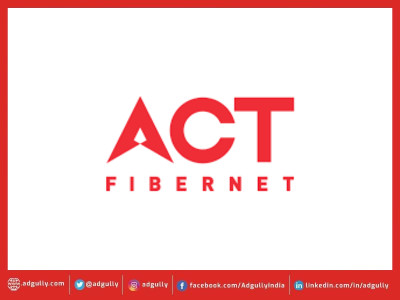
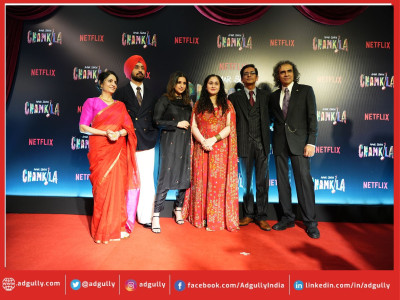
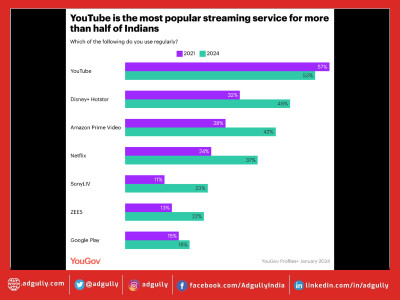


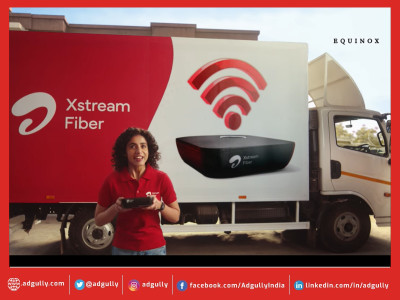


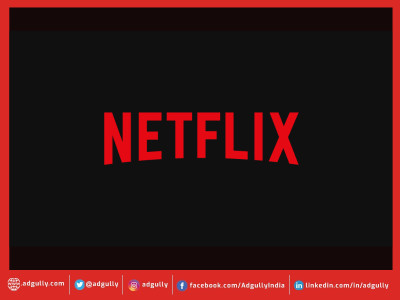


Share
Facebook
YouTube
Tweet
Twitter
LinkedIn